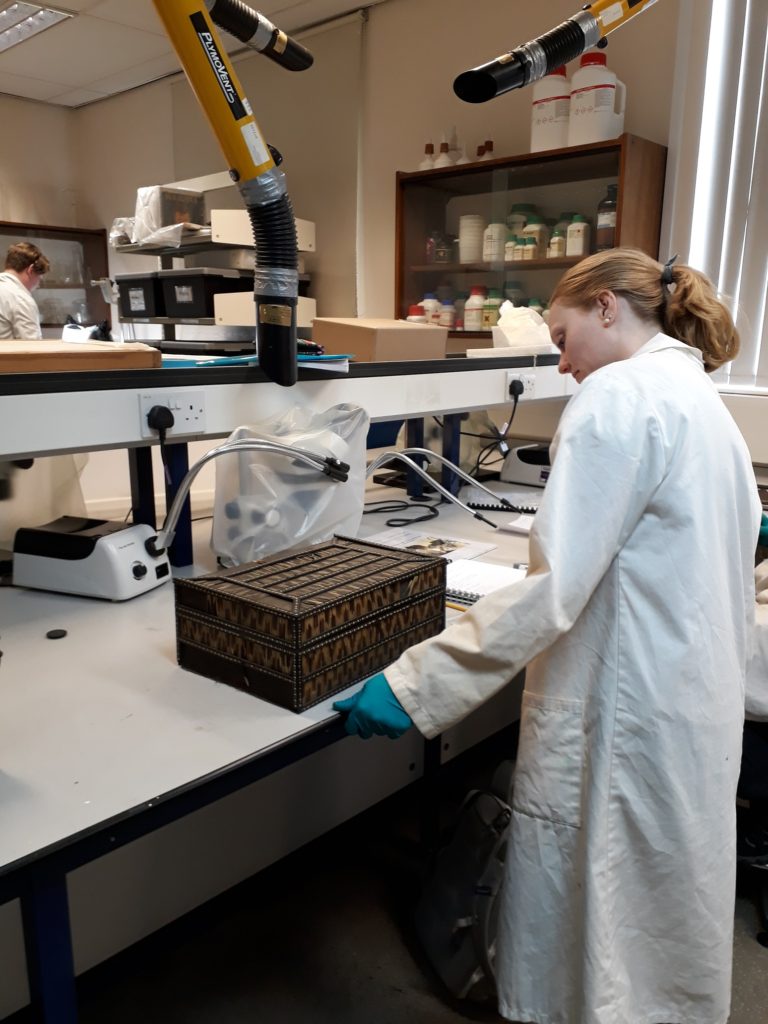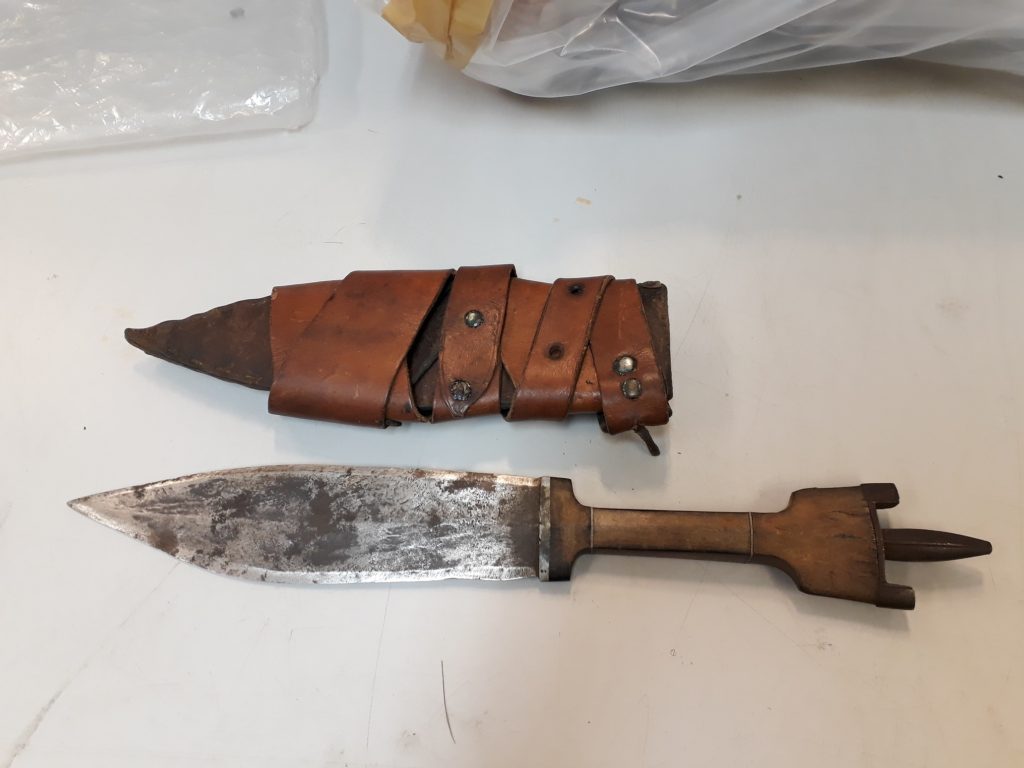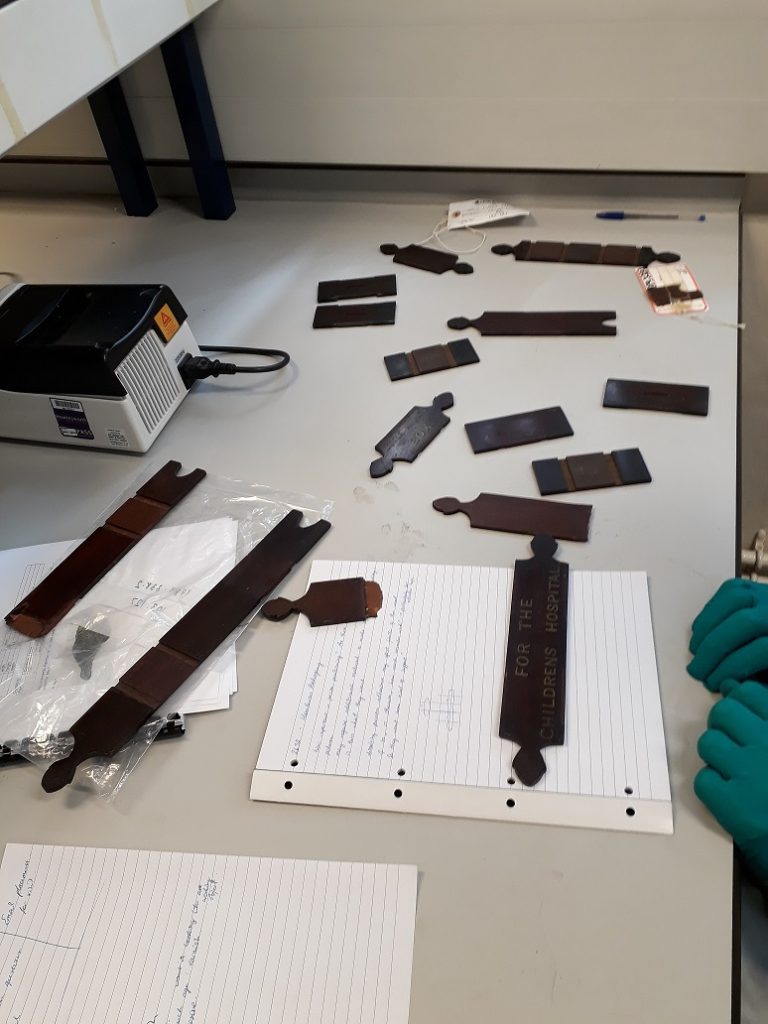Conservation Practice

writing box
Well we’ve had a long break over the exam period but we’re back in the conservation labs now and just easing in to the summer module; Conservation Practice. This module sees the students working on a variety of historic objects from a number of museums and it’s up to them to document, examine, analyse and treat the objects while considering the needs of the museums.
We always start this module with a short lecture on what to expect and then go through the objects so the students can see what options they have and the possible problems they might face. It’s often the first time Dr Caple has seen the objects too so there are usually more than a few quizzical looks aimed in my direction!

We try to aim for a good variety of materials so the students get the most experience possible and in my opinion the more interesting the objects the better, though of course it’s nice to have a few straightforward objects too.
Once we’ve looked at each of the objects we allow the students to each pick one that they are interested in and that they think they would enjoy treating. This is usually the most exciting part for them. This year we had a wooden mask from the Anthropology Department, a small chalk board from Beamish, two Chinese plates from the Oriental Museum and a plaster statue from Beamish museum chosen by the students and all of them look to be interesting projects.

Dr Caple and I then send the students away and assign the remaining objects, aiming to give them a good range of materials to work on and looking to have at least two more complex artefacts and then several more straightforward objects. That way any time they need to take a break from a complex project, or they’re waiting for a treatment, they have something else they can work on.

Right now there’s a lot of research happening in the conservation lab as the students try to get to grips with their objects. They’ve mostly identified the issues and now they’re considering materials and possible treatments, ready to create proposals for the museums.
We can already tell that some of these artefacts are going to have amazing before and after images and it’s going to be an interesting summer as we watch them being treated and preserved. Hopefully we’ll have some nice student blogs looking at some individual objects later on.
